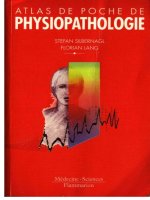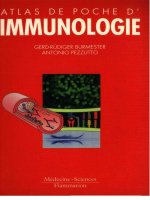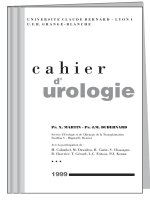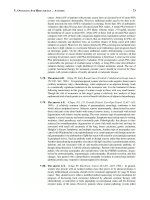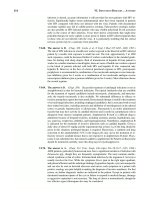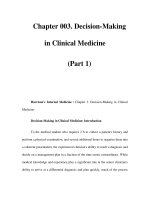HIV Medicine - part 1 pdf
Bạn đang xem bản rút gọn của tài liệu. Xem và tải ngay bản đầy đủ của tài liệu tại đây (671.98 KB, 83 trang )
Flying Publisher
www.HIVMedicine.com
HIV Medicine 2006
Hoffmann - Rockstroh - Kamps
By
Dirk Albrecht, Borstel
Marcus Altfeld, Boston
Philip Aries, Hamburg
Georg Behrens, Hannover
U. Fritz Bredeek, Tucson
Thomas Buhk, Hamburg
Laura Dickinson, Liverpool
Christian Eggers, Linz
Gerd Fätkenheuer, Cologne
Georg Friese, Gießen
Ardeschir Ghofrani, Gießen
Carole Gilling-Smith, London
Katrin Graefe, Hamburg
Christian Hoffmann, Hamburg
Bernd Sebastian Kamps, Paris
Peter Krings, Essen
Christoph Lange, Borstel
Thore Lorenzen, Hamburg
Hermione Lyall, London
Grace A. McComsey, Cleveland
Leonie Meemken, Hamburg
Oliver Mittermeier, Hamburg
Fiona Mulcahy, Dublin
Till Neumann, Essen
Tim Niehues, Düsseldorf
Falk Ochsendorf, Frankfurt
Mario Ostrowski, Toronto
Wolfgang Preiser, Tygerberg
Ansgar Rieke, Koblenz
Jürgen Rockstroh, Bonn
Thorsten Rosenkranz, Hamburg
Andrea Rubbert, Cologne
Dana A. Sachs, Ann Arbor
Bernhard Schaaf, Lübeck
Christiane Schieferstein, Frankfurt
Reinhold E. Schmidt, Hannover
Helmut Schöfer, Frankfurt
Ulrike Sonnenberg-Schwan, Munich
Mirko Steinmüller, Gießen
Matthias Stoll, Hannover
Susanne Tabrizian, Hamburg
Zahra Toossi, Cleveland
Mechthild Vocks-Hauck, Berlin
Bruce D. Walker, Boston
Ulrich A. Walker, Freiburg
Jan-Christian Wasmuth, Bonn
Michael Weigel, Mannheim
Thomas Weitzel, Berlin
Eva Wolf, Munich
HIV Medicine 2006
www.HIVMedicine.com
Edited by
Christian Hoffmann
Jürgen K. Rockstroh
Bernd Sebastian Kamps
Flying Publisher
4
Editors
Christian Hoffmann, M.D., Ph.D.
ifi, St. Georg Hospital
Lohmühlenstrasse 5
D – 20099 Hamburg
Tel: + 49 40 181885 3780
Fax: + 49 40 181885 3788
www.HIVMedicine.com
www.InfluenzaReport.com
Jürgen K. Rockstroh, M.D., Ph.D.
Department of Medicine I
University of Bonn
Sigmund-Freud-Str. 25
D – 53105 Bonn
Phone: + 49 228 287 6558
Fax: + 49 228 287 5034
email:
Bernd Sebastian Kamps, M.D.
FlyingPublisher.com
InfluenzaReport.com
Amedeo.com
Paris
HIV Medicine is an ever-changing field. The editors and authors of HIV Medicine 2006 have
made every effort to provide information that is accurate and complete as of the date of
publication. However, in view of the rapid changes occurring in medical science, HIV
prevention and policy, as well as the possibility of human error, this site may contain technical
inaccuracies, typographical or other errors. Readers are advised to check the product
information currently provided by the manufacturer of each drug to be administered to verify the
recommended dose, the method and duration of administration, and contraindications. It is the
responsibility of the treating physician who relies on experience and knowledge about the
patient to determine dosages and the best treatment for the patient. The information contained
herein is provided "as is" and without warranty of any kind. The contributors to this site,
including the editors and Flying Publisher, disclaim responsibility for any errors or omissions or
for results obtained from the use of information contained herein.
© 2006 by Flying Publisher – Paris, Cagliari, Wuppertal
Proofreading: Emma Raderschadt, M.D.
Cover: Attilio Baghino, www.a4w.it
ISBN: 3-924774-50-1 – ISBN-13: 978-3-924774-50-9
Printed by Druckhaus Süd GmbH & Co. KG, D-50968 Cologne, Tel. + 49 221 387238
Email:
5
Preface 2006
As in previous years, all chapters of the 14
th
edition have been thoroughly
revised, and new chapters have been added (HIV and Renal Disease, Sexual
Dysfunction in HIV/AIDS). Again, the book is freely available on the
Internet. That is the way, we firmly believe, that medical textbooks should
be handled in the 21
st
century.
HIV Medicine is now available in Spanish, German, Russian, and
Portuguese (www.hivmedicine.com/textbook/lang.htm), and we expect
translations into further languages. This is clearly a challenge for the future,
and the authors of HIV Medicine are ready to take the challenge. As a
matter of fact, the 2007 edition is already under way.
The philosophy which governs the publication of HIV Medicine 2006 has
been published at www.freemedicalinformation.com.
Christian Hoffmann
Jürgen K. Rockstroh
Bernd Sebastian Kamps
Hamburg, Bonn, Paris – August 2006
6
Preface 2003
Hardly any field of medicine has ever undergone a similar stormy
development to that of the therapy of HIV infection. Little more than 10
years passed, between the discovery of the pathogen and the first effective
treatment! However, there is also hardly a field that is subjected to so many
fast- and short-lived trends. What today seems to be statute, is tomorrow
often already surpassed. Nevertheless, therapeutical freedom must not be
confused with freedom of choice. This book presents the medical
knowledge that is actual today: from December 2002 to January 2003.
Because HIV medicine changes so fast, HIV Medicine 2003 will be updated
every year. Additional chapters about opportunistic infections, malignancies
and hepatitis are freely available at our Web site www.HIVMedicine.com.
Under certain conditions, the editors and the authors of this book might
agree to remove the copyright on HIV Medicine for all languages except
English and German. You could therefore translate the content of HIV
Medicine 2003 into any language and publish it under your own name –
without paying a license fee. For more details, please see
/>Christian Hoffmann and Bernd Sebastian Kamps
Hamburg/Kiel and Paris/Cagliari, January 2003
7
Assistant Editor
Nyasha Bakare, M.D.
Johns Hopkins School of Public Health
615 N Wolfe St
Baltimore, MD 21205
Contributors
Dirk Albrecht
Medizinische Klinik
Forschungszentrum Borstel
Parkallee 1-40
23845 Borstel
Phone: + 49 4537-188 312
Fax: + 49 4537-188 313
Marcus Altfeld, M.D., Ph.D.
Partners AIDS Research Center
Massachusetts General Hospital
Bldg. 149, 13th Street, 5th floor
Charlestown, MA 02129
USA
Phone: + 1 617 724 2461
Fax: + 1 617 724 8586
Sven Philip Aries, M.D.
Max Brauer Allee 45
D – 22765 Hamburg
Phone: + 49 40 3903534
Fax: + 49 40 3903948
Georg Behrens, M.D., Ph.D.
Klinische Immunologie
Zentrum Innere Medizin der
Medizinischen Hochschule
Carl-Neuberg-Straße 1
D – 30625 Hannover
Phone: + 49 511 532 5393
Fax: + 49 511 532 9067
U. Fritz Bredeek, M.D.
Assistant Clinical Professor
Dept. of Infectious Diseases
Olive View Medical Center
University of California
Los Angeles
Phone: + 1 520 628-8287
Fax: + 1 520 628-8749
Thomas Buhk, M.D.
Grindelpraxis Hamburg
Grindelallee 35
D – 20146 Hamburg
Phone: + 49 40 41 32 420
Laura Dickinson, BSc
Liverpool HIV Pharmacology
Group
University of Liverpool
Block H, First Floor
70 Pembroke Place
GB – Liverpool, L69 3GF
Phone: + 44 151 794 5565
Fax: + 44 151 794 5656
8 Contributors
Christian Eggers, M.D., Ph.D.
Abteilung für Neurologie
Krankenhaus der Barmherzigen
Brüder
Seilerstätte 2
A – 4021 Linz
Phone: + 43 732 7897 25305
Fax: + 43 732 7897 25399
Gerd Fätkenheuer, M.D., Ph.D.
Klinik I für Innere Medizin
Universitätsklinikum Köln
Joseph-Stelzmann-Str. 9
D – 50924 Köln
Phone: + 49 221 478 4886
Fax: + 49 221 478 3424
Georg Friese, M.D.
University Hospital Giessen
Department of Internal Medicine
Infectious Diseases
Klinikstr. 36
D – 35392 Giessen
Phone: + 49 641 99 42674
Fax: + 49 641 99 42679
Ardeschir Ghofrani, M.D.
University Hospital Giessen
Department of Internal Medicine
Pulmonology/Intensive Care
Medicine
Klinikstrasse 36
D – 35392 Giessen
Phone: + 49 641 99 42 421
Fax: + 49 641 99 42 419
Carole Gilling-Smith, M.A.,
FRCOG, Ph.D.
Assisted Conception Unit
Chelsea & Westminster Hospital
369 Fulham Road
GB – London SW10 9NH
Phone: + 41 20 8746 8922
Fax: + 41-20 8746 8921
e-mail:
Katrin Graefe, M.D.
ifi Institute, Haus K
Lohmühlenstrasse 5
D – 20099 Hamburg
Phone: + 49 40 181885 3780
Fax: + 49 40 181885 3788
Stephen Korsman, M.D.
Medizinische Virologie
Tygerberg NHLS / Stellenbosch
University
PO Box 19063, Tygerberg 7505
South Africa
Phone: + 27 21 938 9347
Fax: + 27 21 938 9361
Peter Krings
Klinik für Kardiologie
Westdeutsches Herzzentrum
Essen
Universitätsklinikum Essen
Hufelandstr. 55, 45122 Essen
Phone: + 49 201 723 4878
Fax.: + 49 201 723 5488
Email:
Christoph Lange, M.D., Ph.D.
Medizinische Klinik des
Forschungszentrums Borstel
Parkallee 35
D – 23845 Borstel
Phone: + 49 4537 188 0
Fax: + 49 4537 188 313
Thore Lorenzen, M.D.
ifi Institute
Lohmühlenstrasse 5
D – 20099 Hamburg
Phone: + 49 40 181885 3780
Fax: + 49 40 181885 3788
Contributors 9
Hermione Lyall
The Family Clinic and Imperial
College
St Mary's Hospital, Praed Street
GB – London W2 1NY
United Kingdom
Christoph Mayr, M.D.
MVZ Ärzteforum Seestrasse
Gemeinschaftspraxis HIV/AIDS
und Hepatitiden, Hämatologie
und Onkologie
Seestrasse 64
13347 Berlin
Tel: + 49 30 455095 0
Fax: + 49 30 455095 25
Grace A. McComsey, M.D.
Division of Pediatric infectious
Diseases and Rheumatology
Case Western Reserve University
Cleveland, Ohio
Phone: + 1 216 844 2460
Fax: + 1 216 832 4312
mccomsey.grace@clevelandactu.
org
Leonie Meemken
ifi Institute
Lohmühlenstrasse 5
D – 20099 Hamburg
Phone.: + 49 40 181885 3796
Oliver Mittermeier, M.D.
Department of Psychiatry and
Psychotherapy
Asklepios Westklinikum Hamburg
Suurheid 20
D – 22559 Hamburg
Fiona Mulcahy, M.D., FRCPI
Department of Genito Urinary
Medicine & Infectious Diseases
St James's Hospital
James's Street
EI – Dublin 8
Phone: + 353 1 4162590
Fax: + 353 1 4103416
Till Neumann, M.D.
Universitätsklinikum Essen
Klinik für Kardiologie
Westdeutsches Herzzentrum
Essen
Zentrum für Innere Medizin
Hufelandstr. 55
D – 45122 Essen
Phone: + 49 201 723 4878
Fax: + 49 201 723 5401
Tim Niehues, M.D., Ph.D.
Zentrum für Kinder- und
Jugendmedizin
Klinik für Kinder-Onkologie,
–Hämatologie und –Immunologie
Ambulanz für Pädiatrische
Immunologie und Rheumatologie
Heinrich Heine Universität
Moorenstr. 5
D – 40225 Düsseldorf
Phone: + 49 211 811 7647
Fax: + 49 211 811 6539
Falk Ochsendorf, M.D., Ph.D.
Zentrum der Dermatologie und
Venerologie
Klinikum der J.W. Goethe-
Universität
Theodor-Stern-Kai 7
D – 60590 Frankfurt am Main
Phone: + 49 69 6301 6819
10 Contributors
Mario Ostrowski, M.D.
Clinical Sciences Division
University of Toronto
Medical Sciences Building, Rm
6271
1 King's College Circle
Toronto, ON M5S 1A8
Canada
Phone: + 1 416 946 5805
FAX: + 1 416 978 8765
E-mail:
Ansgar Rieke, M.D.
Klinikum Kemperhof Koblenz
II. Med. Klinik
Immunologische Ambulanz
Koblenzer Str. 115-155
56065 Koblenz
Tel: + 49 261 499 2691
Fax: + 49 261 499 2690
Wolfgang Preiser, M.D., Ph.D.
University of Stellenbosch
Discipline of Medical Virology
Tygerberg Campus
PO Box 19063, Tygerberg 7505,
South Africa
Phone: + 27 21 938 9353, -4
Fax: + 27 21 938 9361
Thorsten Rosenkranz, M.D.
Neurologische Abteilung
Allgemeines Krankenhaus
St. Georg
Lohmühlenstraße 5
D – 20099 Hamburg
Phone: + 49 40 181885 2241
Fax: + 49 40 181885 2971
Andrea Rubbert, M.D., Ph.D.
Medizinische Klinik I
Universitätsklinik Köln
Joseph-Stelzmann Str 9
D – 50924 Köln
Germany
Phone: + 49 221 478 5623
Fax: + 49 221 478 6459
Dana L. Sachs, M.D.
University of Michigan
Department of Dermatology
1910 Taubman Center
1500 E. Medical Center Drive
Ann Arbor, Michigan 48109
USA
Phone: + 1 734 936 4081
Bernhard Schaaf, M.D.
Universitätsklinikum Schleswig-
Holstein
Campus Lübeck
Medizinische Klinik III
Pneumologie/Infektiologie
Ratzeburger Allee 160
23538 Lübeck
Tel: + 49 451 500 2344
Fax: + 49 451 500 6558
Christiane Schieferstein, M.D.
Medizinische Klinik II
Uniklinikum Frankfurt
Theodor-Stern-Kai 7
D – 60590 Frankfurt am Main
Phone: + 49 69 6301 0
Contributors 11
Reinhold E. Schmidt, M.D.,
Ph.D.
Abteilung Klinische Immunologie
Zentrum Innere Medizin der
Medizinischen Hochschule
Hannover
Carl-Neuberg-Straße 1
D – 30625 Hannover
Phone: + 49 511 532 6656
Fax: + 49 511 532 9067
Schmidt.Reinhold.Ernst@MH-
Hannover.de
Helmut Schöfer, M.D., Ph.D.
Zentrum der Dermatologie und
Venerologie
Klinikum der J.W. Goethe-
Universität
Theodor-Stern-Kai 7
D – 60590 Frankfurt am Main
Phone: + 49 69 6301 6833
Ulrike Sonnenberg-Schwan,
Clin. Psych.
Wasserturmstr. 20
D – 81827 Munich
Phone: + 49 89 43766972
Mirko Steinmüller, M.D.
University Hospital Giessen
Department of Internal Medicine
Infectious Diseases
Klinikstr. 36
D – 35392 Giessen
Phone: + 49 641 99 42674
Fax: + 49 641 99 42679
ni-giessen.de
Matthias Stoll, M.D., Ph.D.
Klinische Immunologie
Zentrum Innere Medizin der
Medizinischen Hochschule
Carl-Neuberg-Straße 1
D – 30625 Hannover
Phone: + 49 511 532 3637
Fax: + 49 511 532 5324
Susanne Tabrizian, M.D.
Department of Psychiatry and
Psychotherapy
Asklepios Westklinikum Hamburg
Suurheid 20
D – 22559 Hamburg
Zahra Toossi, M.D.
Division of Infectious Diseases
Case Western Reserve University
School of medicine
10900 Euclid Avenue
BRB 4th floor
Cleveland, Ohio, USA
Phone: + 1 441 06 4984
Mechthild Vocks-Hauck, M.D.
KIK Berlin-Kuratorium für
Immunschwäche bei Kindern
Friedbergstr. 29
D – 14057 Berlin
Phone and Fax: + 49 30 3547421
Bruce D. Walker, M.D., Ph.D.
Partners AIDS Research Center
Massachusetts General Hospital
Bldg. 149, 13th Street, 5th floor
Charlestown, MA 02129
USA
Phone: + 1 617 724 8332
Fax: + 1 617 726 4691
12 Contributors
Ulrich A. Walker, M.D., Ph.D.
Medizinische Universitätsklinik
Abt. für Rheumatologie und
Klinische Immunologie
Hugstetterstrasse 55
D – 79106 Freiburg
Phone: + 49 761 270 3384
Fax: + 49 761 270 3384 or -3306
freiburg.de
Jan-Christian Wasmuth, M.D.
Department of Medicine I
University of Bonn
Sigmund-Freud-Str. 25
D – 53105 Bonn
Phone: + 49 228 287 6558
Fax: + 49 228 287 5034
Michael Weigel, M.D., Ph.D.
Frauenklinik im Klinikum
Mannheim
Theodor-Kutzer-Ufer 1-3
D – 68167 Mannheim
Phone: + 49 621383 2286
Fax: + 49 621 383 3814
heidelberg.de
Thomas Weitzel, M.D.
Institut für Tropenmedizin
Charité, Humboldt-Universität
Berlin
Spandauer Damm 130
D – 14050 Berlin
Phone: + 49 30 30116 816
Fax: + 49 30 30116 888
Eva Wolf, Dipl. Phys. Univ.,
M.P.H.
MUC Research GmbH
Karlsplatz 8
D – 80335 Munich
Phone: + 49 89 558 70 30
Fax: + 49 89 550 39 41
13
Content
1. Introduction 23
Transmission routes 23
Natural history 25
CDC classification system 26
Epidemiology 28
Conclusion 29
References 29
2. Acute HIV-1 Infection 33
Introduction 33
Immunological and virological events during acute HIV-1 infection 33
Signs and symptoms 35
Diagnosis 35
Treatment 37
References 37
3. HIV Testing 41
How to test 41
HIV antibody diagnosis 42
When to test 49
Problem: The "diagnostic window" 50
Direct detection of HIV 51
Test results 52
Special case: Babies born to HIV-infected mothers 53
Special case: Needlestick injury or other occupational HIV exposure 54
Special case: Screening of blood donations 55
What is relevant in practice? 56
Useful Internet sources relating to HIV testing 57
References 58
4. Pathogenesis of HIV-1 Infection 61
1. The structure of HIV-1 62
2. The HIV replication cycle 66
3. HIV and the immune system 74
References 82
5. ART 2006 89
1. Perspective 89
2. Overview of antiretroviral agents 94
3. ART 2006/2007: The horizon and beyond 130
4. Goals and principles of therapy 162
14 Content
5. When to start HAART 184
6. Which HAART to start with? 199
7. When to change HAART 224
8. How to change HAART 231
9. Salvage therapy 238
10. When to stop HAART 253
11. Monitoring 267
6. Management of Side Effects 279
Gastrointestinal side effects 279
Hepatotoxicity 281
Pancreatitis 284
Renal problems 284
CNS disorders 286
Peripheral polyneuropathy 287
Haematological changes 288
Allergic reactions 289
Lactic acidosis 290
Avascular necrosis 292
Osteopenia/osteoporosis 292
Increased bleeding episodes in hemophiliacs 293
Specific side effects 293
References 294
7. Lipodystrophy Syndrome 301
Background 301
Clinical manifestation 301
HAART, lipodystrophy syndrome and cardiovascular risk 303
Pathogenesis 304
Diagnosis 307
Therapy 309
References 313
8. Mitochondrial Toxicity of Nucleoside Analogs 317
Introduction 317
Pathogenesis of mitochondrial toxicity 317
Clinical manifestations 318
Monitoring and diagnosis 322
Treatment and prophylaxis of mitochondrial toxicity 323
References 326
Content 15
9. HIV Resistance Testing 331
Assays for resistance testing 331
Background 333
Interpretation of genotypic resistance profiles 336
Summary 344
Resistance tables 346
References 349
10. Pregnancy and HIV 357
HIV therapy in pregnancy 357
References 370
11. Antiretroviral Therapy in Children 375
Characteristics of HIV infection in childhood 375
Diagnosis of HIV infection < 18 months of age 379
Diagnosis of HIV infection > 18 months of age 379
When to initiate antiretroviral therapy 379
General considerations for treatment of HIV-infected children 382
Strategy 383
Classes of antiretrovirals 384
Drug interaction 388
Monitoring of therapy efficacy and therapy failure 388
Change of therapy 388
Supportive therapy and prophylaxis 389
Conclusion 389
References 390
12. Opportunistic Infections (OIs) 395
OIs in the HAART era 395
Pneumocystis pneumonia (PCP) 398
Cerebral toxoplasmosis 406
CMV retinitis 412
Candidiasis 418
Tuberculosis 422
Interaction of HIV and MTB 422
Clinical manifestations 423
Diagnosis 424
Therapy 426
Atypical mycobacteriosis (MAC) 436
Herpes simplex 440
Herpes zoster 443
Progressive multifocal leukoencephalopathy 446
16 Content
Bacterial pneumonia 450
Cryptosporidiosis 453
Cryptococcosis 456
Salmonella septicemia 460
Immune reconstitution inflammatory syndrome (IRIS) 462
Wasting syndrome 468
Rare OIs 471
13. Kaposi’s Sarcoma 481
Signs, symptoms and diagnosis 481
Prognosis and staging 483
Treatment 484
Local therapy 484
Chemotherapy 485
Immunotherapy 487
Monitoring and follow-up care 487
References 488
14. Malignant Lymphomas 491
Systemic non-Hodgkin lymphomas (NHL) 492
Primary CNS lymphoma 503
Hodgkin’s disease (HD) 506
Multicentric Castleman's Disease (MCD) 508
15. The New HIV Patient 515
The initial interview 515
The laboratory 516
The examination 517
16. Vaccinations and HIV 519
General considerations 519
Vaccinations in HIV-infected children 520
Postexposure prophylaxis 521
Practical approach to vaccinations 521
Details on individual vaccines 522
17. Traveling with HIV 533
Travel preparations 533
Antiretroviral therapy (ART) 533
General precautions 534
Vaccinations 534
Malaria prophylaxis 535
Entry regulations and travel insurance 535
Special risks 536
Content 17
Medical problems after traveling 539
References 539
Links 540
18. HIV and HBV/HCV Coinfections 541
HIV and HCV Coinfection 541
HIV and HBV coinfection 554
19. GBV-C Infection 565
Is GBV-C a friendly virus? 565
Does the knowledge about GBV-C have any practical use? 567
Proposed pathomechanisms 568
References 569
20. HIV and Renal Function 571
Clinical manifestation/diagnosis of nephropathy 571
Routine tests for renal impairment 572
HIV-associated nephropathy (HIV-AN) 572
Post-infectious glomerulonephritis 573
Principles of therapy of glomerulonephritis 573
Renal safety of antiretroviral therapy 574
Nephroprotection 577
Estimating the GFR 578
Dosage of antiretrovirals in renal insufficiency 578
OIs and renal insufficiency 579
References 581
21. HIV-associated Skin and Mucocutaneous Diseases 585
Introduction 585
Dermatological examination and therapy in HIV-infected patients 587
HAART: Influence on (muco-) cutaneous diseases 589
Conclusions 590
Most frequent HIV-associated skin diseases 591
Skin and mucocutaneous disease related to antiretroviral drugs 601
References 603
22. HIV and Sexually Transmitted Diseases 611
Syphilis 611
Gonorrhea 613
Chlamydia infection 615
Chancroid 616
Condylomata acuminata 617
18 Content
23. HIV and Cardiac Diseases 619
Coronary artery disease (CHD) 619
Congestive heart failure 621
Pericardial effusion 623
Cardiac arrhythmias 623
Valvular heart disease 624
Further cardiac manifestations 624
References 625
24. HIV-associated Pulmonary Hypertension 629
Etiology, pathogenesis, classification 629
Diagnosis 630
Therapy 631
Conclusion for clinicians 636
References and Internet addresses 636
25. HIV and Pulmonary Diseases 639
Anamnesis 640
Pulmonary complications 642
References 645
26. HIV-1 associated Encephalopathy and Myelopathy 647
HIV encephalopathy 647
HIV-associated myelopathy 651
References 652
27. Neuromuscular Diseases 655
Polyneuropathy and polyradiculopathy 655
Myopathy 663
28. HIV and Psychiatric Disorders 667
Major depression 667
Psychotic disorders 673
Acute treatment in psychiatric emergency 676
References 677
29. Sexual Dysfunction in HIV/AIDS 679
Introduction 679
Definitions 679
Etiology of sexual dysfunction in HIV/AIDS 679
Ongoing research 681
Diagnosis of sexual dysfunction 681
Therapy for sexual dysfunction 682
30. HIV and Wish for Parenthood 687
Introduction 687
Content 19
Pre-conceptual counseling 689
Male HIV infection 689
Female HIV infection 690
HIV infection of both partners 691
Psychosocial aspects 692
The future 692
References 694
31. Post-Exposure Prophylaxis (PEP) 697
Transmission 697
Transmission risk 697
Effectiveness and limitations of PEP 698
When is PEP indicated? 699
Potential risks of PEP 699
Initial interventions 700
Initiation of PEP 701
Management of PEP 703
References 703
32. Drug Profiles 706
3TC – Lamivudine 706
Abacavir (ABC) 707
Acyclovir 709
Amphotericin B 709
Amprenavir 711
Atazanavir 712
Atovaquone 713
Azithromycin 714
AZT – Zidovudine 715
Cidofovir 717
Clarithromycin 718
Clindamycin 719
Combivir™ 719
Co-trimoxazole 720
d4T – Stavudine 721
Dapsone 722
Daunorubicin, liposomal 723
ddC – Zalcitabine 724
ddI – Didanosine 725
Delavirdine 726
Doxorubicin (liposomal) 727
20 Content
Efavirenz 728
Emtricitabine (FTC) 730
Erythropoietin 731
Ethambutol 731
Fluconazole 733
Fosamprenavir 734
Foscarnet 735
Ganciclovir 736
G-CSF 737
Indinavir 738
Interferon alfa 2a/2b 739
Interleukin-2 740
Isoniazid (INH) 741
Itraconazole 742
Kivexa™ (USA: Epzicom™) 743
Lopinavir 744
Nelfinavir 745
Nevirapine 746
Pentamidine 748
Pyrimethamine 749
Ribavirin 750
Rifabutin 752
Rifampin (or rifampicin) 753
Ritonavir 754
Saquinavir 756
Sulfadiazine 757
T-20 (Enfuvirtide) 758
Tenofovir 759
Tipranavir 761
Trizivir™ 762
Truvada™ 763
Valganciclovir 764
Voriconazole 765
33. Drug-Drug Interactions 767
21
Part 1
Basics
22
23
1. Introduction
Bernd Sebastian Kamps and Christian Hoffmann
The first reports of homosexual patients suffering from previously rare diseases
such as pneumocystis pneumonia and Kaposi’s sarcoma were published in May
1981 (Centers for Disease Control 1981a, 1981b, 1981c). It soon became clear that
the new disease affected other population groups as well, when the first cases were
reported in injecting drug users. However, it took almost two years until, in 1983,
the human immunodeficiency virus type I (HIV-1) was defined as the primary
cause of the acquired immunodeficiency syndrome (Barré-Sinoussi 1983, Broder
1984, Gallo 1984).
Almost 25 years have now elapsed. Twenty-five years, in which HIV infection has
changed from a fatal condition to a manageable chronic illness. Twenty-five years,
in which the development of antiretroviral therapy (ART) has been one of the dra-
matic advances in the history of medicine. However, for the vast majority of people
living with HIV/AIDS, ART is still light years away – largely inaccessible in re-
source-poor countries where HIV continues to devastate families, communities and
societies, especially the poor and the socially marginalized.
In the following 800 pages, we present a comprehensive overview of the treatment
of HIV infection and its complications. As in previous years, all chapters have been
thoroughly revised, and most parts of the book were available on the Internet
(www.HIVMedicine.com) months before they were printed here. The philosophy
that governs the publication of HIV Medicine 2006 has recently been published at
www.freemedicalinformation.com. We firmly believe that that is the way medical
textbooks should be handled in the 21
st
century.
Transmission routes
There are several ways in which someone can become infected with HIV. These
transmission routes are well defined (see also Chapter “Post-Exposure Prophy-
laxis”). HIV infection can be transmitted through:
• unprotected sexual intercourse with an infected partner;
• injection or transfusion of contaminated blood or blood products (infection
through artificial insemination, skin grafts and organ transplants is also
possible);
• sharing unsterilized injection equipment that has been previously used by
someone who is infected;
• maternofetal transmission (during pregnancy, at birth, and through breast-
feeding).
Occupational infections of healthcare or laboratory workers may occur; however, a
1995 study estimated that although 600,000 to 800,000 needlestick injuries oc-
curred among healthcare workers every year in the USA, occupational infection
was not frequent. The risk of occupational HIV transmission from contaminated
needles to healthcare workers was found to be 0.3 % in case series performed prior
to the availability of potent ART.
24 Introduction
There are sometimes concerns that there may be alternative routes of HIV transmis-
sion. It must be explicitly stated that HIV is NOT transmitted by mosquitoes, flies,
fleas, bees, or wasps. HIV is NOT transmitted through casual every day contact. No
case of HIV infection has been documented to arise from contact with non-bloody
saliva or tears. Since HIV is not transmitted by saliva, it is not possible to contract it
through sharing a glass, a fork, a sandwich, or fruit (Friedland 1986, Castro 1988,
Friedland 1990). In the opinion of leading experts, exposure of intact skin to HIV-
contaminated body fluids (e.g. blood) is not sufficient to transfer the virus.
Sexual intercourse
Unprotected sexual intercourse is the most important transmission route of HIV
infection worldwide. Although receptive anal sex is estimated to produce the high-
est risk of infection, infection after a single insertive contact has also been de-
scribed. The presence of other sexually transmitted diseases markedly increases the
risk of becoming infected with HIV.
The lower the viral load, the less infectious the patient. A prospective study of 415
HIV-discordant couples in Uganda showed that of 90 new infections occurring over
a period of up to 30 months, none was from an infected partner with a viral load
below 1,500 copies/ml. The risk of infection increased with every log of viral load
by a factor of 2.45 (Quinn 2000). It should be noted that the levels of viral load in
blood and other body fluids do not always correlate with one another. Thus, indi-
vidual risk remains difficult to estimate. In addition, HIV-infected patients are not
protected from superinfection with new viral strains.
The higher the viral load, the more infectious the patient. This is especially true for
patients during acute HIV infection. During acute HIV-1 infection, the virus repli-
cates extensively in the absence of any detectable adaptive immune response,
reaching levels of over 100 million copies of HIV-1 RNA/ml (see Chapter “Acute
HIV-1 infection”).
Intravenous drug use
Sharing unsterilized injection equipment that has been previously used by someone
who is infected is an important route of HIV transmission in many countries with a
high prevalence of intravenous drug users. In contrast to the accidental needlestick
injury (see also Chapter “Post-Exposure Prophylaxis”), the risk of transmission
through sharing injection equipment is far higher: the intravenous drug user ensures
the proper positioning of the needle by aspiration of blood.
Maternofetal
In the absence of any intervention, an estimated 15-30 % of mothers with HIV in-
fection will transmit the infection during pregnancy and delivery. In approximately
75 % of these cases, HIV is transmitted during late pregnancy or during delivery.
About 10 % of vertical HIV infections occur before the third trimester, and 10-15 %
are caused by breastfeeding.
In Western countries, perinatal (vertical) HIV infection has become rare since the
introduction of antiretroviral transmission prophylaxis and elective cesarean sec-
tion. For more details, see Chapter “Pregnancy and HIV”.
Natural history 25
Injection or transfusion of contaminated blood products
In most Western countries, administration or transfusion of HIV-contaminated
blood or blood products has become a rare event. With current testing methods (for
details see also Chapter “HIV Testing”), the risk of acquiring HIV from a unit of
transfused blood is about 1:1,000,000. However, while Western European coun-
tries, the United States, Australia, Canada, and Japan have strict and mandatory
screening of donated blood for HIV, not all countries do.
Natural history
The “natural history” described in the following refers to HIV infection in the ab-
sence of HAART.
The acute viral syndrome of “primary” HIV infection (which is defined as the time
period from initial infection with HIV to the development of an antibody response)
shows symptoms that often resemble those of mononucleosis. These appear within
days to weeks following exposure to HIV (see Chapter “Acute HIV-1 Infection”).
However, clinical signs and symptoms may not occur in all patients. During acute
HIV infection, there is usually a high plasma viremia and frequently a marked de-
crease in CD4+ T-cells. The CD4+ T-cell count later increases again, normally to
levels inferior to the pre-infection values (see Figure 1).
Figure 1: CD4+ T-cell count and viral load during HIV infection.
After the acute infection, equilibrium between viral replication and the host immune
response is usually reached, and many infected individuals may have no clinical
manifestations of HIV infection for years. Even in the absence of antiretroviral
treatment, this period of clinical latency may last 8-10 years or more. However, the
